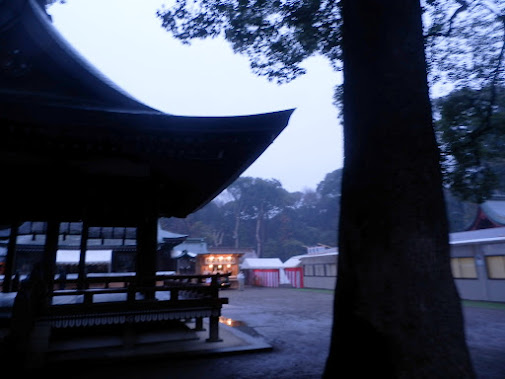A Shinto Shrine around Tokyo
A Japanese Boy who Saw the Spirit World in Japan 200 Years Ago
In 1820 when Tokyo was still called Edo under a samurai regime, there appeared a boy who claimed that he had been took by a mysterious mountain hermit to a kind of spirit world and guided there for several years since he had been 7 years old. A notable samurai scholar of the Shintoism religion called Hirata Atsutane showed strong interest in the boy and made a long interview with him over a year to publish a book on the record about the interview. Accordingly, the 15 years old boy Torakichi became popular in Edo. The book is still on sale in Japan as those interested in spiritualism pay strong attention to Torakichi.Swedenborg is famous for his books on his experiences in the spirit world he claimed to have while living in Sweden in the 18th century. But, Torakichi claimed that he had seen the spirit world of the Japanese version, since Japan was not yet westernized and modernized but was in the feudalistic samurai society where Christianity was officially banned. Therefore, the spirit world described by him is a kind of reflection of the Japanese society at the time with various deities of Shinto rather than Buddhism. The boy described how shinto rituals were performed in the spirit world. He also wrote strange letters used there. The boy also said that he travelled sky with the mountain hermit who became his master to various holy mountains in Japan and China and even to the moon and other stars which he found to be masses of gasses.
Torakichi was asked about the spirit world not only by Hirata but also by other intellectual grownups. So, the teenager boy must be under strong pressure, but he boldly talked about his experiences and opinions on the spirit world for months. His talks were consistent and detailed.
Swedenborg wrote that there were evil spirits as well as good spirits in the spirit world. Torakichi also said about existence of evil spirits and the Devildom as well as sacred deities. He showed strong sense of good and evil.
According to Torakichi, those who read well and learn much in the academic field become so proud of their knowledge that they become narrow-minded and despise others; they will go into the Devildom. Rich men will also go into the Devildom because their greed makes the poor poorer. And no matter how much money they have earnt, they cannot bring money into the spirit world after their death in this world. In the interview, Torakichi criticized the Japanese society at the time where peace had been enjoyed for more than 200 years under the Tokugawa samurai regime but the atmosphere of moral corruption and deterioration was expanded. He showed especially strong hatred to Buddhist monks protected and treated preferentially by the samurai regime. It is generally said that Buddhist monks degraded themselves in that era while enjoying peculiar privilege given by the samurai regime.
Hirata Atsutane was later expelled from Edo to his home region by the samurai regime for his criticizing the calendar system of the samurai regime, although his study on Shinto is highly appraised by some people even today. However, his book on Torakichi criticizing Buddhist monks might be the reason for his bad luck. But, Hirata all the more believed in the existence of the afterlife through talks with Torakichi, which strengthened his sense of enthusiasm for the Shinto religion.
Torakichi later left Edo and lived in a village around Edo to live as a medical doctor based on the super-natural power acquired in the spirit world, but he did not write books on his spiritual experience. Without Hirata, Torakichi could not have become so popular as a boy with spiritual experience, which is very unique in the Japanese history.
Finally, we should note that the issue of good and evil is important even in the afterlife as well as in this world, which is also emphasized by Swedenborg.
Note: Buddhism and Shinto as well as Confucianism are major spiritual or religious backbones of the Japanese people even today. The Japanese mythology is based on Shinto, the indigenous religion of Japan, since Buddhism and Confucianism were imported from or through China.
++++ ++++ ++++
John 1, King James Version
25 And they asked him, and said unto him, Why baptizest thou then, if thou be not that Christ, nor Elias, neither that prophet?
26 John answered them, saying, I baptize with water: but there standeth one among you, whom ye know not;
27 He it is, who coming after me is preferred before me, whose shoe's latchet I am not worthy to unloose.
28 These things were done in Bethabara beyond Jordan, where John was baptizing.
29 The next day John seeth Jesus coming unto him, and saith, Behold the Lamb of God, which taketh away the sin of the world.



